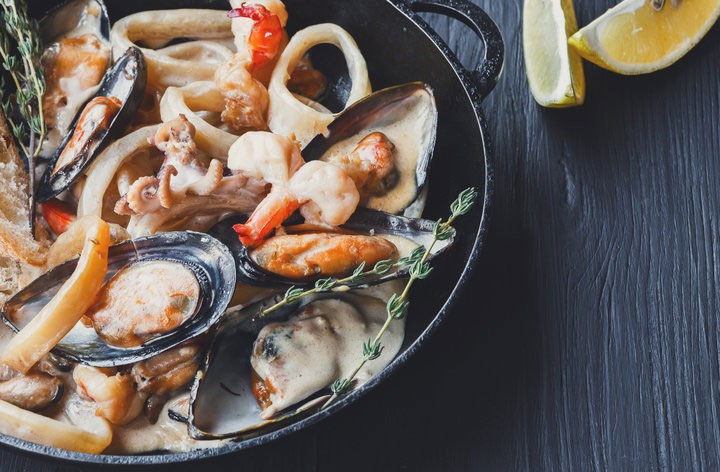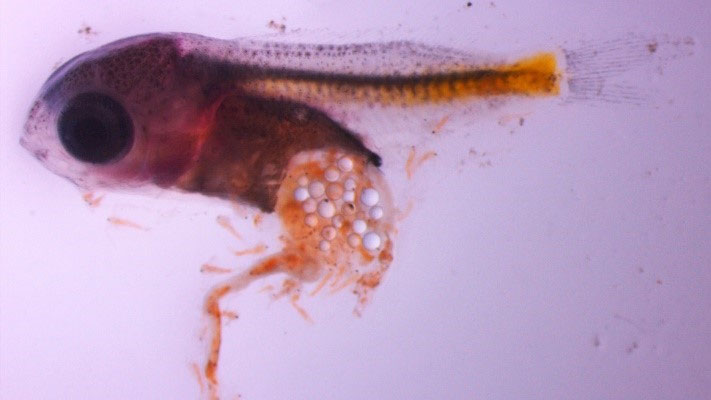Startled with the amount of plastic you are eating into your mouth every year
How many plastic pieces are you eating each year? That is a very big number.
Perhaps up to this point, many of us understand how plastic can make environmental pollution so horrible.
In recent years, science and public opinion are paying attention to - plastic pieces of less than 5mm (even about 100 nanometers). These plastic pieces are flooding the ocean, entering the body of marine life.
In other words, they got into the food chain, and appeared on our table.
Plastic comes from the sea .

Shellfish contains a relatively large amount of plastic.
In Europe, for example, a basic serving of mussels and oysters can hold up to 90 pieces of plastic. This number will vary by country and generation, but if you eat regularly, you may be eating up to 11,000 pieces of plastic each year.
With fish, the number is more difficult to estimate. Most of the studies so far have only analyzed the composition of the stomach and intestines of fish, while these are the first discarded parts when processed. In fact, micro-plastic has been found in the liver, kidneys . too, which means they can appear everywhere in the fish's body.
Even canned fish also contain micro-plastic particles. Although the number is determined to be low, but at least 5 plastic pieces for one serving. The plastic came in from the canning process, or the plastic particles flew in the air.

Phytoplankton contain micro-plastic particles, and then enter the marine organism.
Another kind of food contains plastic beads, that is salt . According to statistics, 1kg of salt can contain up to 600 plastic beads. If you eat 5g of salt a day, you have 3 plastic beads loaded on you. And even, the amount of plastic in salt may be more than that.
And from unrelated sources
Even everyday foods unrelated to the sea also contain plastic beads. According to new studies, terrestrial animals also have plastic in them (because they eat fish). However, the data is still very limited. The only recent study of chickens in Mexico showed that each animal contained about 10 plastic beads in kites.
Experts also found plastic beads in beer and honey. With each bottle of beer, you are swallowing about 10 micro plastic particles into your body.

Even everyday foods unrelated to the sea also contain plastic beads.
In particular, the ones we drink every day, whether plastic bottles or glass bottles. With a disposable water bottle, the plastic density in the water ranges from 2 to 44 grains / liter. Plastic is contaminated during the bottling process.
Besides, some evidence also indicates that plastic in food comes from dust in the air. Of course, this depends on the level of pollution depending on the geography, but you can eat up to 70,000 pieces of plastic each year. And that's the number that happens when you eat just one meal a day.
Although there is no concrete evidence of the harmful effects of micro-particles with health, but these are still huge numbers, need to be touched by everyone.
- Tragedy: Whales are eating hundreds and thousands of plastic trash every day
- Are we eating plastic waste daily?
- Each person swallowed at least 50,000 micro-plastic beads every year
- The end of the era of plastic garbage is probably coming soon, thanks to this invention
- People who like seafood are eating thousands of plastic pieces every year?
- 'We have been through the age of stone, copper, iron and now plastic, which is really scary.'
- Corals reject shrimp eggs, choose to eat micro-plastic seeds
- This new finding may soon cause plastic waste in the ocean to disappear quickly
- Eating an apple also has an itchy mouth, you may have this strange syndrome
- Why can't marine animals stop eating plastic garbage?
- Seabirds eat more plastic than eat fish
- Discovered billions of microscopic particles in tea filter bags
 Is the magnetic North Pole shift dangerous to humanity?
Is the magnetic North Pole shift dangerous to humanity? Washington legalizes the recycling of human bodies into fertilizer
Washington legalizes the recycling of human bodies into fertilizer Lightning stone - the mysterious guest
Lightning stone - the mysterious guest Stunned by the mysterious sunset, strange appearance
Stunned by the mysterious sunset, strange appearance